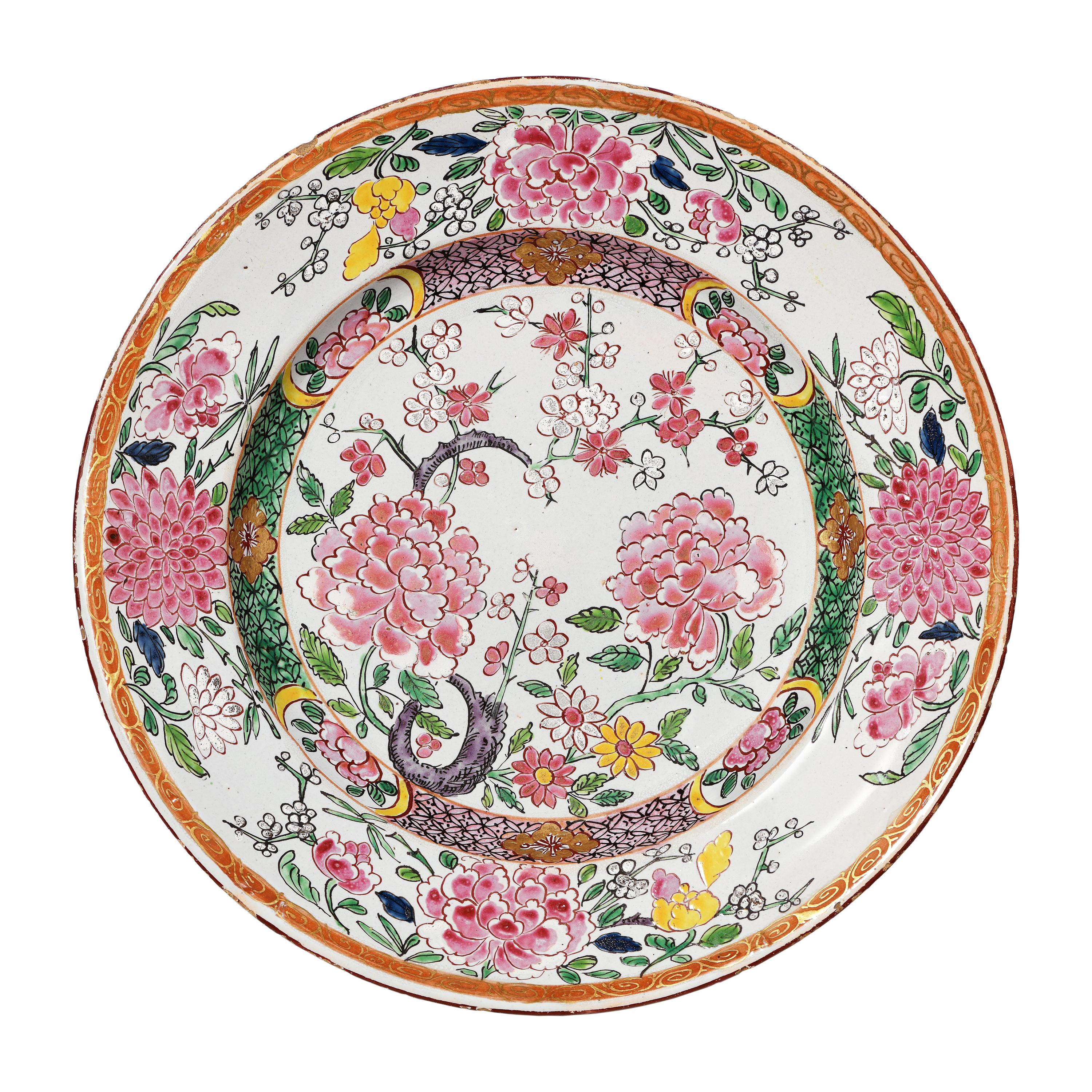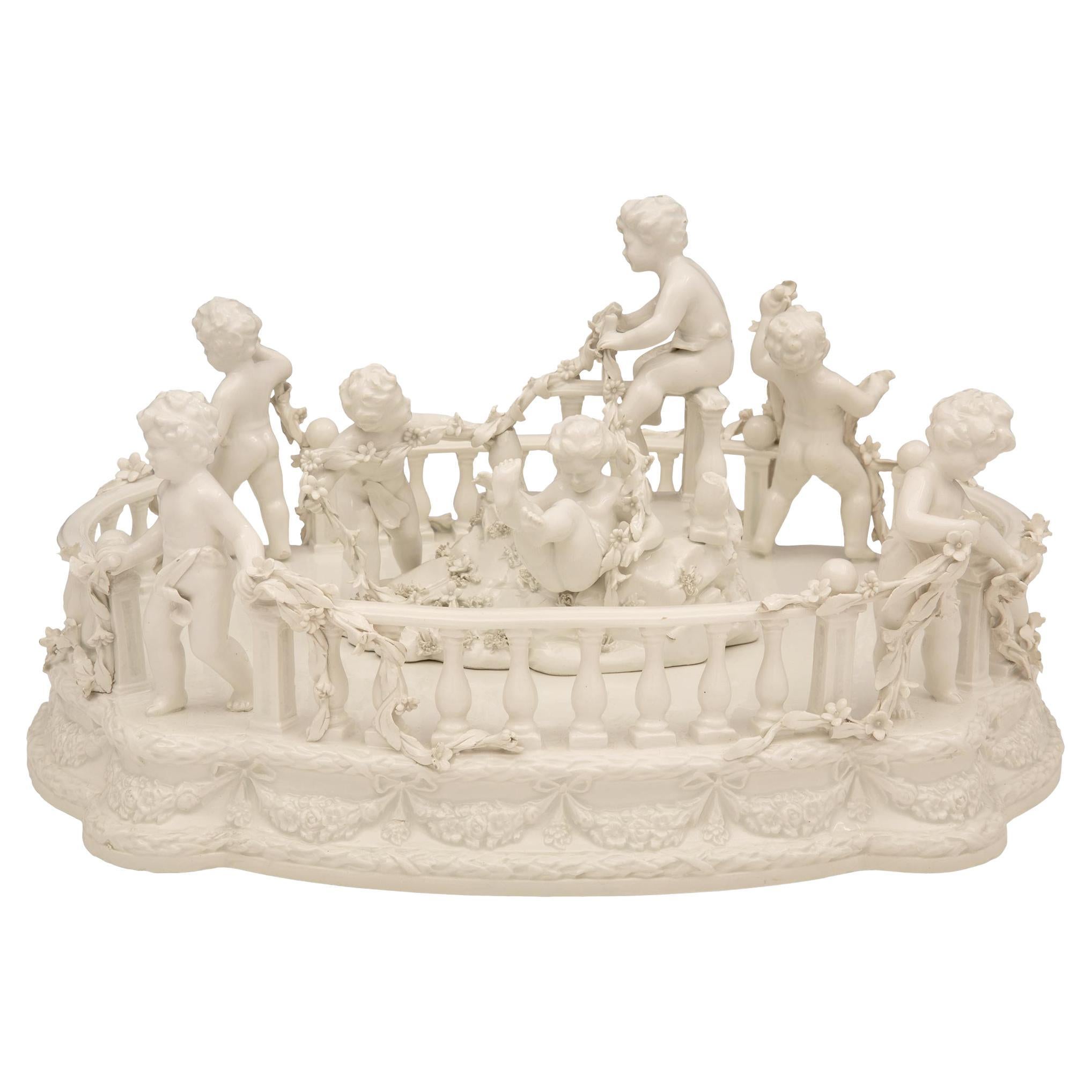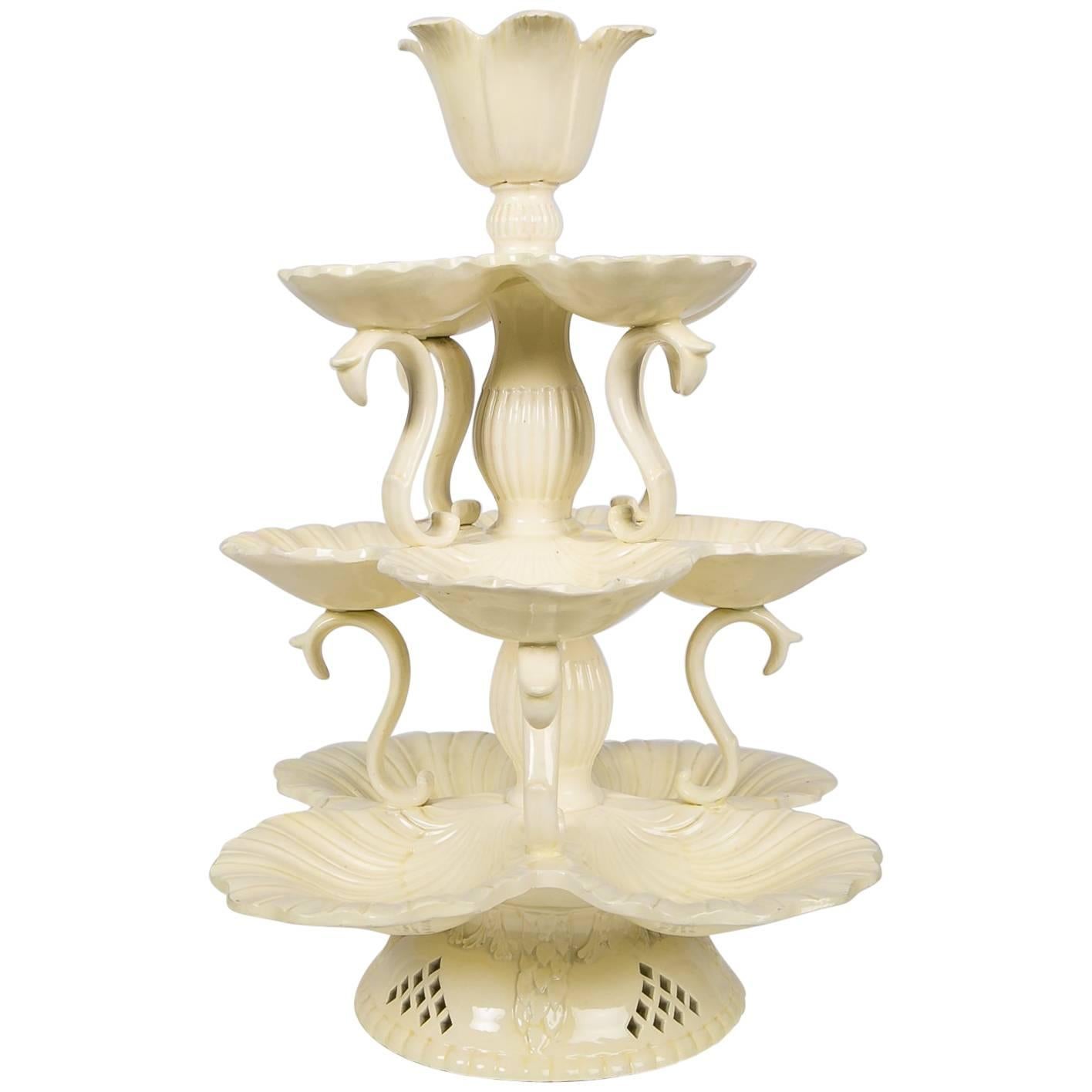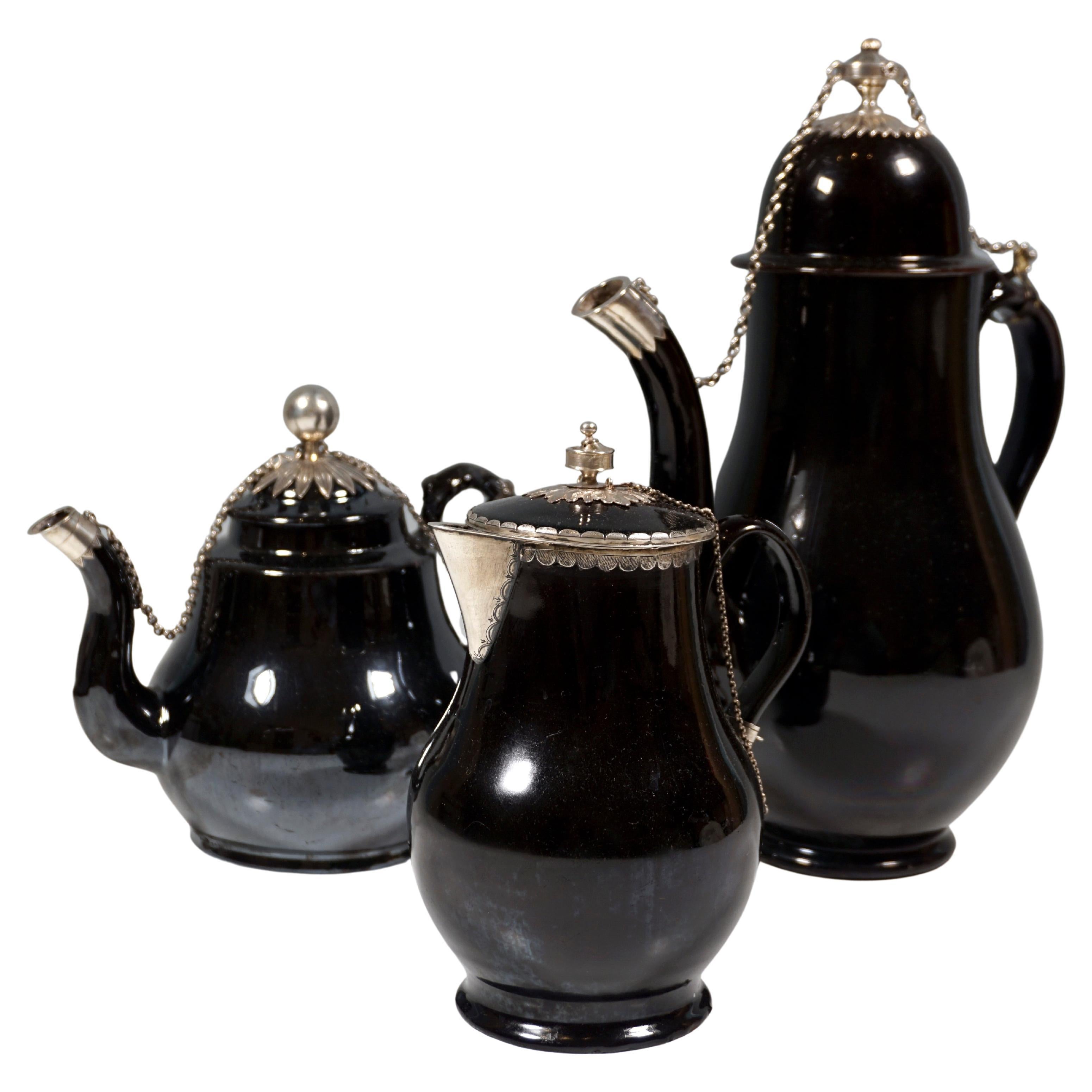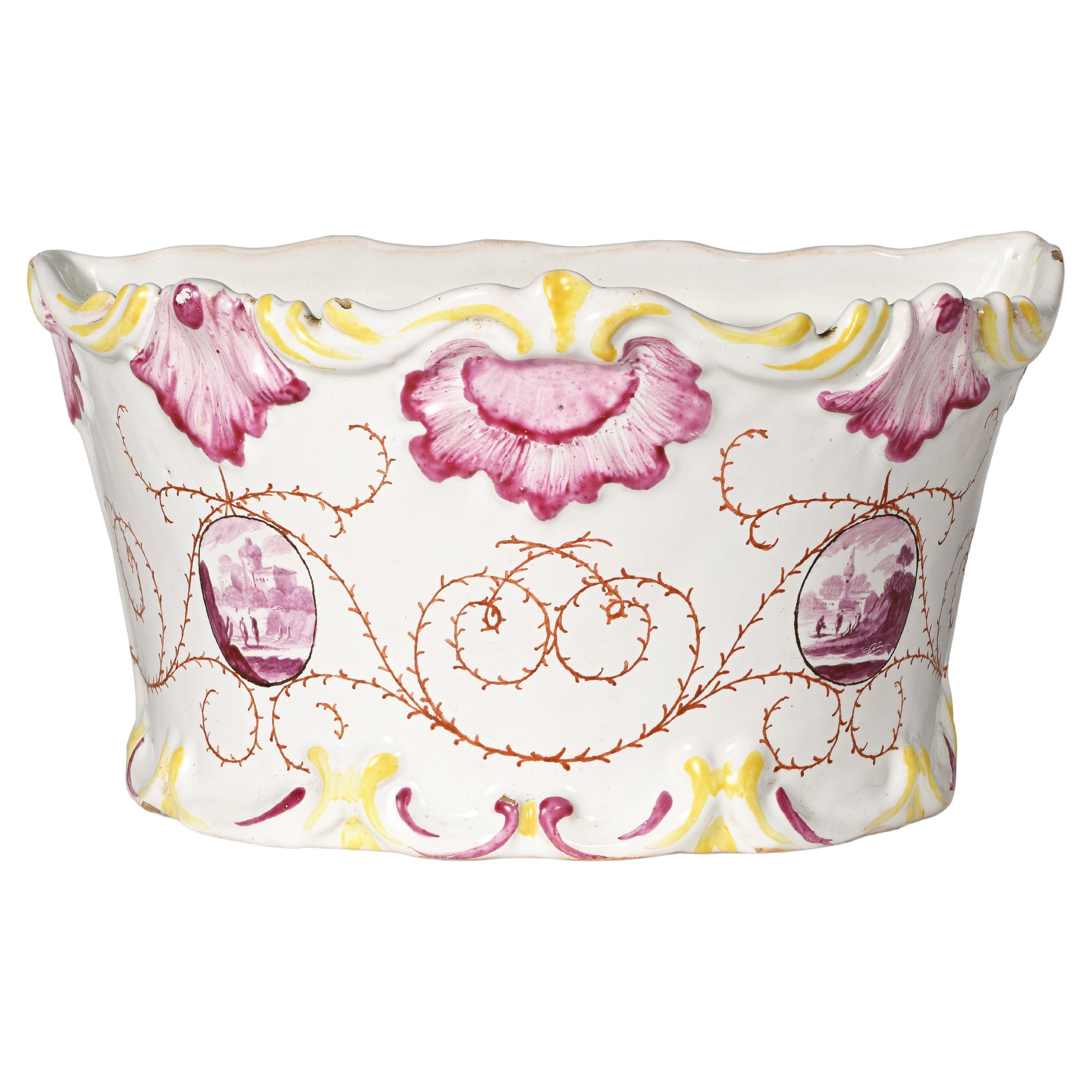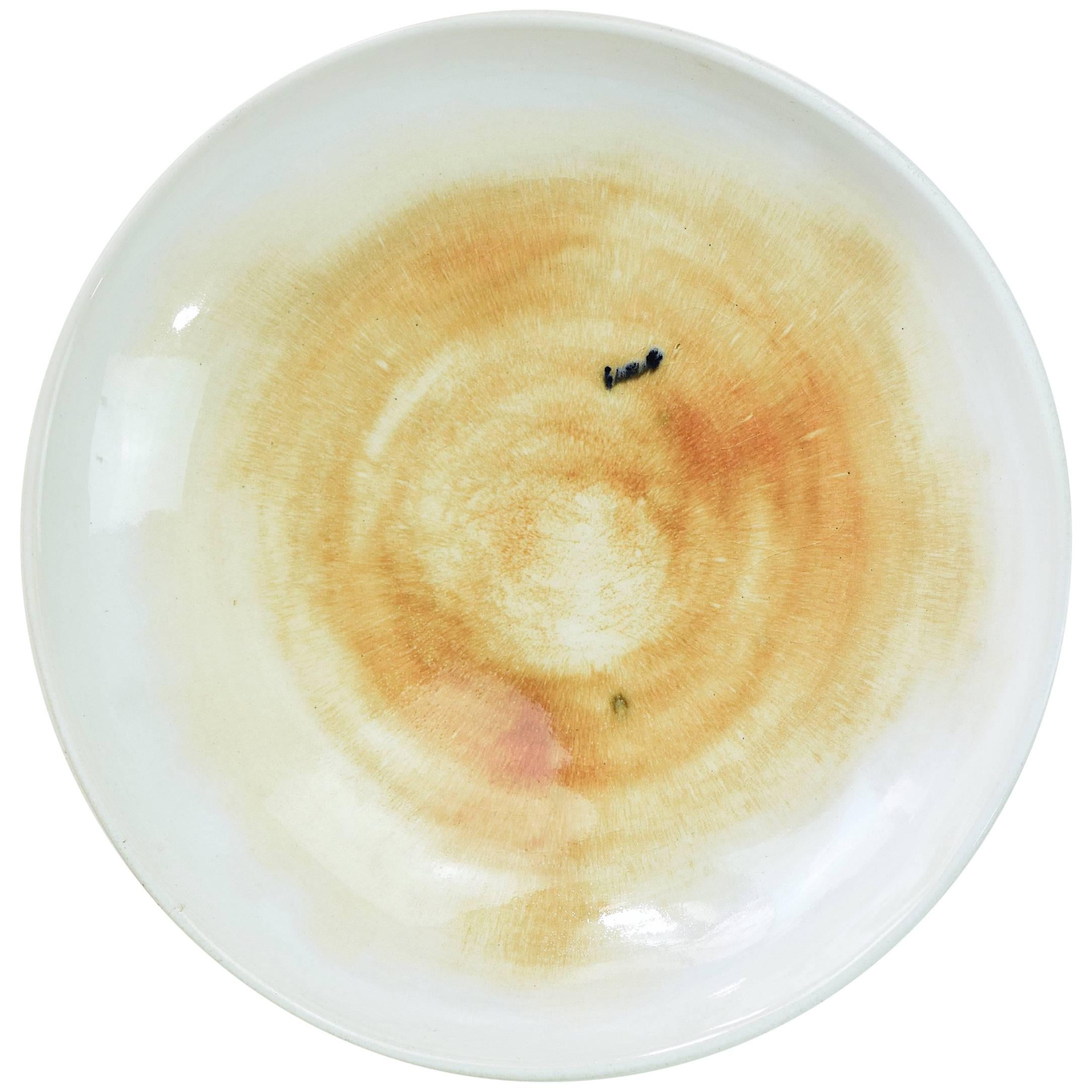Items Similar to 18th Century Italian Maiolica Centerpiece Bassano Venice, circa 1750
Video Loading
Want more images or videos?
Request additional images or videos from the seller
1 of 18
18th Century Italian Maiolica Centerpiece Bassano Venice, circa 1750
About the Item
Maiolica centerpiece
Pasquale Antonibon factory
Nove di Bassano, Venice, 1740-1770.
Measures: 1.85 in x 19.21 in x 15.27 in
4.7 cm X 48.8 cm X 38.8 cm.
lb 5.29 (kg 2.4)
State of conservation: thin passing fêlure with covered chipping and a glued foot
The Antonibon were an important family of Venetian ceramic makers from the late seventeenth to the second half of the eighteenth centuries. They produced some of the most renowned Italian Maiolica of the time.
The object is part of the production from the period under the management of Pasquale Antonibon, who between 1750 and 1760 brought the manufacture to its maximum height of grandeur thanks to its first refined experiments with porcelain.
The centerpiece in question is Maiolica, with a four-lobed shape resting on eight onion-shaped feet. For specimens of similar form, see Ericani G., Marini P., Stringa N., La ceramica degli Antonibon, Milano 1999, p. 71, n. 54, with different decoration.
The decoration, which is concentrated in the center of the top, made of blue monochromy, shows a bunch of naturalistic flowers among which anemones and tulips are joined by sinuous stems. The meticulous attention to detail and the delicacy in the execution brings this work closer to the highest quality products coming out of the 18th century Venetian manufacture under Pasquale Antonibon. In particular, technical-stylistic affinities are found with the magnificent under-window plate signed "Nove" and dated "1751" which is one of the fundamental documented examples of this production of manufacture, now at the "Giuseppe Roi" Ceramics Museum in Bassano del Grappa.
- Creator:Pasquale Antonibon (Manufacturer)
- Dimensions:Height: 1.86 in (4.7 cm)Width: 19.22 in (48.8 cm)Depth: 15.28 in (38.8 cm)
- Style:Baroque (Of the Period)
- Materials and Techniques:Maiolica,Other
- Place of Origin:
- Period:1750-1759
- Date of Manufacture:circa 1750
- Condition:Repaired: Thin passing fêlure with covered chipping and a glued foot. Wear consistent with age and use. Thin passing fêlure with covered chipping and a glued foot.
- Seller Location:Milano, IT
- Reference Number:1stDibs: LU4352214038002
About the Seller
4.3
Vetted Seller
These experienced sellers undergo a comprehensive evaluation by our team of in-house experts.
Established in 1860
1stDibs seller since 2018
19 sales on 1stDibs
Typical response time: 4 hours
Associations
International Confederation of Art and Antique Dealers' Associations
- ShippingRetrieving quote...Ships From: Milano, Italy
- Return PolicyA return for this item may be initiated within 14 days of delivery.
More From This SellerView All
- 18th Century Italian Maiolica Dish Milano, circa 1770Located in Milano, ITMaiolica dish, "Famille Rose" and gold decoration Felice Clerici factory Milan, 1770-1780 8.93 in (22.27 cm) in diameter lb 0.66 (kg 0.3) State of conservation: perfect, except for ...Category
Antique 1770s Italian Rococo Ceramics
MaterialsMaiolica
- 18th Century, Italian Maiolica Flower Pot, Pasquale Rubati, Milan, 1770 circaBy Pasquale RubatiLocated in Milano, ITMaiolica flower pot “a mezzaluna” decorated with trompe l’oeil Pasquale Rubati Factory Milan, 1770 circa It measures: 4.7 in (cm 12) X 5 in (...Category
Antique 1770s Italian Rococo Ceramics
MaterialsMaiolica
- Six Mid-18th Century Italian Chairs, Venice, circa 1750Located in Milano, ITSix carved walnut chairs Venice, mid-18th century Height 35.03 in (18.70 in to the seat) x 19.09 in x 18.30 in (89 cm - 47.5 cm to the seat - x 48.5 cm x 46.5 cm) lb 80 (kg 36) Stat...Category
Antique 1750s Italian Rococo Dining Room Chairs
MaterialsWalnut
- Ancient Italian Maiolica Faenza, Ferniani Factory, Circa 1700By Ferniani FactoryLocated in Milano, ITCenterpiece light blue maiolica shell Ferniani factory, early period: 1693-1776 Faenza, 1700 circa 5.5 in x 14.72 in x 13.77 in (14 cm x 37.4 cm X cm 35) lb 4.40 (kg 2) State of con...Category
Antique Early 1700s Italian Baroque Ceramics
MaterialsMaiolica
- Ancient Italian Maiolica Faenza, Ferniani Factory, Circa 1700By Ferniani FactoryLocated in Milano, ITCenterpiece white maiolica shell Ferniani factory, early period: 1693-1776 Faenza, circa 1700 Measures: 5.6 in x 14.72 in x 13.46 in (14.3 cm x 37.4...Category
Antique Early 1700s Italian Baroque Ceramics
MaterialsMaiolica
- Ancient Italian Maiolica Tureen Milano, 1770 circaBy Pasquale Rubati, Felice ClericiLocated in Milano, ITMaiolica tureen “allo struzzo” (ostrich decoration) Milan, Felice Clerici or Pasquale Rubati factory, circa 1750-1780 Measures: 9.25 in x 12.79 in x 10.23 in (cm 23.5 x cm 32.5 x cm 26) lb 4.78 (kg 2.17) State of conservation, a felûre consolidated inside with slight edge chipping restored. In Milan in the 18th century two Majolica warehouses were opened, the first, by Felice Clerici, in 1745, the second in 1756 by Pasquale Rubati. Traditionally this type of decoration has been attributed to the Pasquale Rubati factory. In reality the motif “allo struzzo”, one of the clearest examples of how the taste for chinoiserie met with considerable success during the 18th century, had been produced, in specimens of greater or lesser quality, by both Milanese manufactories. This Maiolica tureen has a swollen and ribbed oval bowl, rests on an extroflexed foot and shows stirrup handles. The tri-color ornament, in the typical tones of Japanese "Imari" decorations, shows an idealized oriental landscape that develops around a perforated rock and has a willow tree with long lance-shaped leaves framing the long-legged bird figure. The ornamentation is enhanced by decorative elements such as butterflies, small florets and a vase with a thin flowery stem. The lid is ribbed with a pear-shaped knob on top. The decoration was called in the Milanese manufactories "allo struzzo" (ostrich decoration) and this refers to the oriental figure Xian He or the crane, symbol of longevity, here losing its symbolic value. It is hypothesized that among some 16th century engravings...Category
Antique 1770s Italian Chinoiserie Ceramics
MaterialsMaiolica
You May Also Like
- Italian 19th Century White Porcelain Centerpiece, Signed BassanoLocated in West Palm Beach, FLA charming Italian 19th century white porcelain centerpiece, signed Bassano. The centerpiece is raised by a lovely scalloped shaped base wi...Category
Antique 19th Century Italian Centerpieces
MaterialsPorcelain
- Antique English Creamware 18th Century Sweetmeat Platt Menage circa 1780-1790By Leeds PotteryLocated in Katonah, NYWe are thrilled to offer this fabulous large three-tiered 18th-century creamware platt menage, made circa 1780-90 in Staffordshire or Yorkshire, England. It is a rare and elegant ex...Category
Antique Late 18th Century English Rococo Centerpieces
MaterialsCreamware
- Late 18th Century Terre De Namur Core Piece, Coffee Tee & Milk, BelgiumLocated in Vienna, AT3-part core piece consisting of coffee pot, teapot and milk jug made of Terre de Namur ceramics. Terre de Namur The fine black faience is a particular product of Namur, Belgium, lat...Category
Antique Late 18th Century Belgian Baroque Ceramics
MaterialsPorcelain
- 20th Century Georges Jouve Ceramic Centerpiece, France, 1950'sBy Georges JouveLocated in Paris, FRFrench 20th century vintage circular rare collector's ceramic dish or centerpiece by Georges Jouve of exceptional craftsmanship. Signed at the base. France, Circa 1950's. ----- We...Category
20th Century French Mid-Century Modern Ceramics
MaterialsCeramic
- Italian Contemporary Large Ornamental Plate CenterpieceLocated in bari, ITAn Italian contemporary large ornamental plate centerpiece, the plate is signed by Tarshito author in the 2004. Tarshito architect first artist after...Category
Early 2000s Italian Other Centerpieces
MaterialsCeramic
- Italian 18th Century Louis XVI Period Giltwood CenterpieceLocated in West Palm Beach, FLA very handsome Italian 18th century Louis XVI period giltwood centerpiece. The elongated octagonal shaped surtout de table is raised by eight most decorative foliate feet below a fo...Category
Antique 18th Century Italian Louis XVI Centerpieces
MaterialsMirror, Giltwood
Recently Viewed
View AllMore Ways To Browse
Italian Silver 18th Century
Venice Silver
Glass Stemmed Flower
Glass Flower Stem
Antique Glass For Windows
18th Venice
Important Documented
Lobed Glass
Blue Glass Flower Shape
18th Century Italian Venice
Glass Onion
Venetian Glass Stem
Tulip Plates
Glass Tulip Flowers
Bassano Italy
Milano Antique
Venetian Glass 18th
Tulips Porcelain
